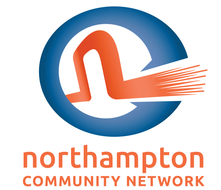The City of Northampton formally unveiled two surveys on Wednesday to measure the level of support for municipal broadband. There is a survey for Northampton residents and another survey for Northampton businesses. Participants have until April 23, 2021 to complete the surveys. The residential survey is also available in Spanish.
It’s vital that you take the survey for the following reason: the more people who respond, the more accurate the data about the current situation, the better the city will understand the needs and desires of our community. The city will therefore be better equipped to make a decision about whether or not to build a network.
The survey will also be mailed to all Northampton residential addresses. Or you can take the survey right now using any of these links:
The paper survey should include a business reply envelope. The paper survey can also be dropped off at:
Information Technology Services
James House
42 Gothic Street
Northampton, MA 01060
More information is available on the city’s municipal broadband page.

Consulting for a town-owned municipal network, it is incredibly expensive, outsourced heavily, and technically unable to match the functionality and skill set of larger corporations, given the complexity of present data requirements. The largest speed (aka latency) changes occur in the household with effective routers capable of processing packets quickly as well as able to handle the bandwidth (aka capacity), not using high-latent (aka slow) wireless and opting for hard-wire where possible, while understanding the radiation emitting from all modern consumer wireless products and how high transmit power leads to signal noise (aka slower speed), as well as the influence and impact of one’s neighbor’s devices and the default full-spectrum configurations of all consumer routers and access points. The significance of upstream data connections as the limiting factor in bandwidth based upon communication of send and receive responses which will be resolved once cable internet deploys DOCSIS 4.0. Then there is the question of whether this fiber would be dedicated, TDMA, or what the user share for a strand it would be. It if is not dedicated, then DOCSIS 4.0 would be the faster, higher capacity, and inexpensive option.